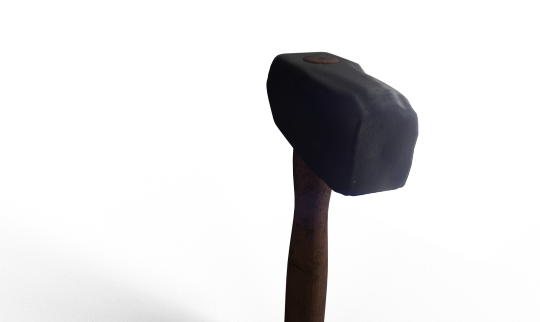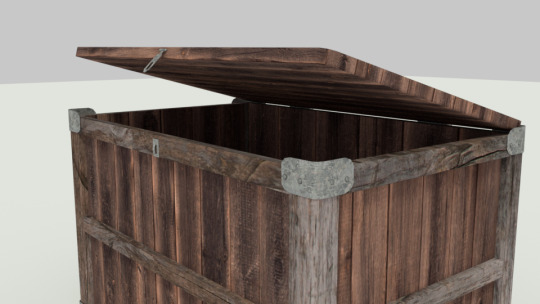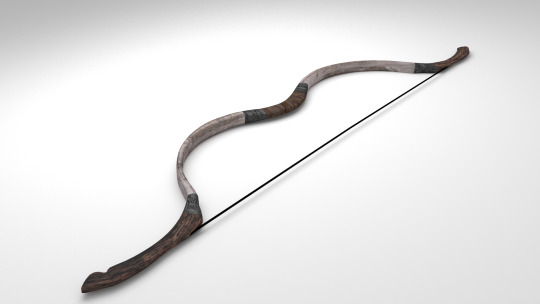#errantcode
Explore tagged Tumblr posts
Text
Sounds of production
Music has always served as psychological fuel for people. Been that way since we started hitting hollow things to get everyone elevated before a hunt or the subsequent feast.
So, as our project moves through its various phases, tunes of all sorts have been catalysts. I can only speak for myself, as what is motivating and inspiring to one person may just be an irritant to someone else. I’d like to collect some tracks that are serving me well at the moment. Of course, I can only link to what’s already openly available, but after a while I might end up with a collection of music that played throughout this production. Might be nice to have as a time-capsule once we’re a couple projects in.
“Choros” - Ludovico Einaudi
I say “I can only speak for myself”, but if you listen to this track in its entirety at a decent volume and at the end aren’t creatively inspired, you may need to look inward -- for capacitors or wiring, because you may be a robot. Kidding aside, this is just one of my favorite pieces of contemporary non-soundtrack orchestration.
youtube
“Revolution” - Uppermost
Not so much creativity-inspiring, but productivity-inspiring. If there’s already an idea or something and the work for it just needs to get done.....or I need to do some dishes, this track is a nice background head-bob that seems to keep work going.
youtube
So yeah... I think I like the idea of cataloging these. Always nice to have a reference to go back to when you’re stuck!
3 notes
·
View notes
Text
Introducing --
So, the guy who’s tasked with doing our prop and set modeling, and who has been burdened with meshes I’ve made and been told “This is a mess. Here, please fix it!” and who not only comes back with them fixed, but with alternate (often much better) versions of them? That guy? My brother? It’s this guy right here: @chaosequilibrium
He’s goddamned talented. So much so, that aside from slashing through the mire of CG asset production is taking a brief break today to participate in a “performance day” at his office where he’ll be playing a lead guitar segment from a Dream Theater track. Because that’s a thing he can do too.
I can play some basic rhythm guitar, but I’m not going to be of any musical use unless you need some serious shakuhachi tunes belted out.
Anyway, with @betterneko, @chaosequilibrium and myself, that’s the team. That is Errant Code. Oh, and a bunch of computers. And a wily cat who tries to destroy them (I guess Moxie should count too but she doesn’t have a Tumblr, to the best of my knowledge).
#errantcode#errant code#three people and a rack of computers#and a cat#unstoppable force#just one that stops during day jobs and child care and other responsibilities#frequently stopped force#but determined
2 notes
·
View notes
Text
Props! Because characters need stuff.
Our prop building process starts with sketching out a general idea of what the item should look like and figuring out how many versions we need. If it's ever close enough to the camera to need high-detail textures and a high-polygon mesh (the actual geometry of the object) then we'll need to make a high-rez version. If it won't ever be too close the camera, we can get away with a medium-resolution version of it and call it a day. This actually occurs in live-action productions as well: If your character is wielding their super-cool sword in a long shot, the props department will have a sword that is more durable but less detailed. If they're holding the sword in a close-up shot, props will have what's referred to as the "hero" version of the sword: the most detailed and meticulously designed build they can manage (which will, due to its delicate details, probably fall the hell apart if it actually strikes anything).
The same goes for what we're doing, only MUCH EASIER. Build a prop with as much geometry as you can manage, then apply the highest-resolution textures and materials you can to it. There's your "hero" prop. Need a medium-resolution version for long shots? Take the same prop, drop the number of polygons and make a low-rez version of your textures. Done! Now you've got two props that are fundamentally identical, only built for their specific purposes. And you're not wasting 1s and 0s on a 4k version of something that's only in the background of a shot.
The best booze vessels a frog-lizard creature could want!
This is our basic "creature's jug". Since it will be drinking from several of them over the course of the short, we'll be painting different versions, but using this base version as the starting canvas, so to speak.
This model's mesh was built by my super-talented brother Nick, and I handled the texture and materials:


What time is it?
Have giant rats? You'll need a good hammer to take care of those. Unfortunately, drunken amphibians aren't the best iron smiths. But you go with what you got, right?
Again, this one is Nick on the mesh build and me on materials and camera:



We use a great software suite to work on our final materials after a model has been completely built. Before it gets to the materials/texturing phase, a placeholder texture is put on to give a general idea of what the final product might look like. Luckily, my brother is damned good at making sure his placeholder textures are as close to "final" as possible (and in a few cases, I think we can just use the placeholder and be done with it!). The following props are still works-in-progress and have placeholder textures on them, but I think they still look great. These are all my brother's work:
Box for your archery equipment and hammers and such
And it’s already rigged to open and close!


Version 1 of the creature's scythian recurve bow
Nick made a second version [not pictured] just 'cause he could. So we've got bow options!


“Proof of concept” rope
There are going to be so many ropes, twine, strings and all sorts of tethering in this short. Here's the base test of a heavy nautical rope for mast-to-mast lantern hanging. It's going to have it's own dedicated physics system too, so all the swinging can be physically accurate.

So those are some props for the show so far. Many, many more to do as well as a fully animated human, a bipedal creature and a few rats ‘of unusual size’.
More to come!
2 notes
·
View notes
Text
Now for the fun stuff!
Up until now, what I've been talking about has been really early pre-production stuff: writing, storyboards, etc. These are processes that are pretty common knowledge. You write something. You draw simple pictures to represent camera shots of something. Not a whole lot of figuring out "how the hell do I do this?". But now it's time to observe the making of an animated short film while the creators simultaneously learn HOW to make an animated short film!
Every studio has their own different production pipelines, but there are some basic constants in 3D animation: Concept work, modeling (building the geometry of everything), texturing (applying the materials and textures to those models), rigging (setting models up to be animated), animation, lighting, rendering (taking all of the physical data, including lighting, motion, physics simulations, etc...and churning out a picture from it. This picture becomes a single frame in the animation), then the whole compositing and post-production process.
Though we went through several project ideas, rejecting each because it would be too ambitious for our first piece, what we settled on still involves a lot of complex factors. If you haven't read the short that we're adapting, you can find it here (it's only like 2 pages, maybe less. It's quick, I promise.), but if you have, you know that there are a few elements that are fairly constant in the story. Water and multiple light sources (often MOVING light sources) are just a couple of these.
One of the first technical challenges we set out to explore was the water: its movement, transparency, viscosity and all that. Now, a lot of these factors are controlled by what kind of "shader" you use (that's the element that determines the texture and look of something) and there are a million variations of water shaders out there. Rather than jump head-first into that, I just ran some basic physics tests to see how objects moving through and under the water looked. Here's an early test using a simple icosphere and a magically levitating body of water.
youtube
We want our water ripples to look right and for an object under the surface to still be slightly visible. All of these factors can be tweaked (and will be, a thousand times, I'm sure) to get just the look needed for a particular substance or shot.
Next we want to make sure that light off the water's surface looks decent. And if not, what does it take to get it looking better? Since we're going to be dealing with lots of lights and a constantly moving liquid surface, we needed to start with the basics. We whipped together a few basic low-poly paper lanterns and ran them over a liquid surface as a boat-like shape gave us our water ripples.
youtube
Though the water physics looked way off (I’ve since learned to correct this! Victory!) the actual reflections looked like they worked. Not bad for a basic proof of concept!
While these basic physics tests were being run, we were also working on modeling and texturing some of our props. I'm excited to share those next!
Until next time (probably today)!
1 note
·
View note
Text
Sounds of Production 2
More music that fills the background of making stuff
"Starvation" - Thomas Bergersen
While technically not from any soundtrack, this instrumental piece is available on the licensing market that production companies use to select tracks for trailers and such. So it could be in something at any moment. I would love to use this in a project. Most of Thomas Bergersen's stuff is awesome, but this is a personal favorite.
youtube
"Twist The Knife" - Evil Nine & Emily Breeze
Fun, aggressive and probably capable of making you exceed the speed limit if listened to on the road.
youtube
0 notes